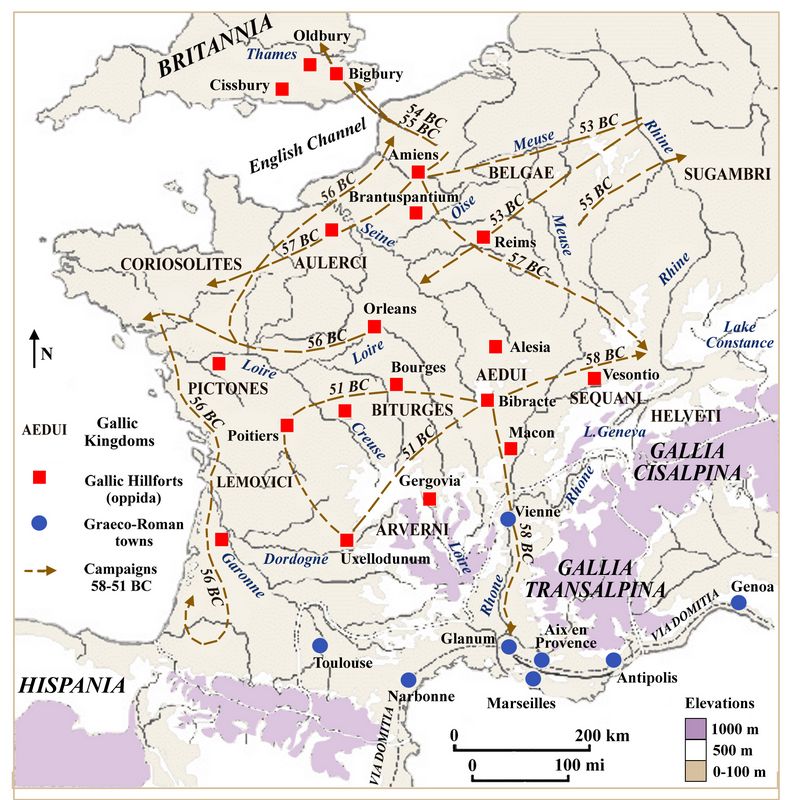Athena Review Image Archive ™
Map of Caesar's campaigns in Gaul (58-50 BC)

Map of Caesar's campaings in Gaul in 58-50 BC (Athena Review Image Archive)
Caesar's Commentaries on the Gallic War (De Bellum Gallico)
provides a uniquely in depth account of Gaul and its people. This
included seven books on the campaigns from 58 to 52 BC, ending with the
defeat of Vercingetorix. Besides describing the Gallic War, Caesar's
account is the only primary source on the Celts of Gaul, Germany and
Britain during the Late Iron Age in the 1st century BC.
Caesar's
campaigns in Gaul began in 58 BC, when the Helvetii and several
neighboring peoples began a mass migration through Roman
territory. Caesar drove back the Helvetii, then defeated the
Sequani, who had been threatening the Aedui, allies of Rome. The
following year (57 BC), Caesar moved north and conquered the
Belgae.
Caesar crossed the Rhine in 55 BC after defeating German tribes on its Gallic (western) banks. He then took two legions for a brief reconassiance of Britain, returning the next year with a major force of five legions (half of the army in Gaul) in July of 54 BC. The Romans marched as far as the Thames and secured tribute from several British tribes
Caesar spent all of 53 BC subduing the resurgent Belgae and other rebellious tribes in the north such as the Nervii, Menapii, and Treveri near the Rhine, as well as the Senones and Carnutes. Gallic resistance culminated in the following year (52 BC) under the Arverni warrior Vercingetorix. After several battles, Vercingetorix and the Gauls were cornered and besieged at the oppidum of Alésia. After the defeat of Vercingetorix, through 51 and 50 BC, Caesar was involved with "mopping-up" efforts in Gaul, including a siege at Uxellodunum.
.....Copyright © 1996-2019 Rust Family Foundation (All Rights Reserved).